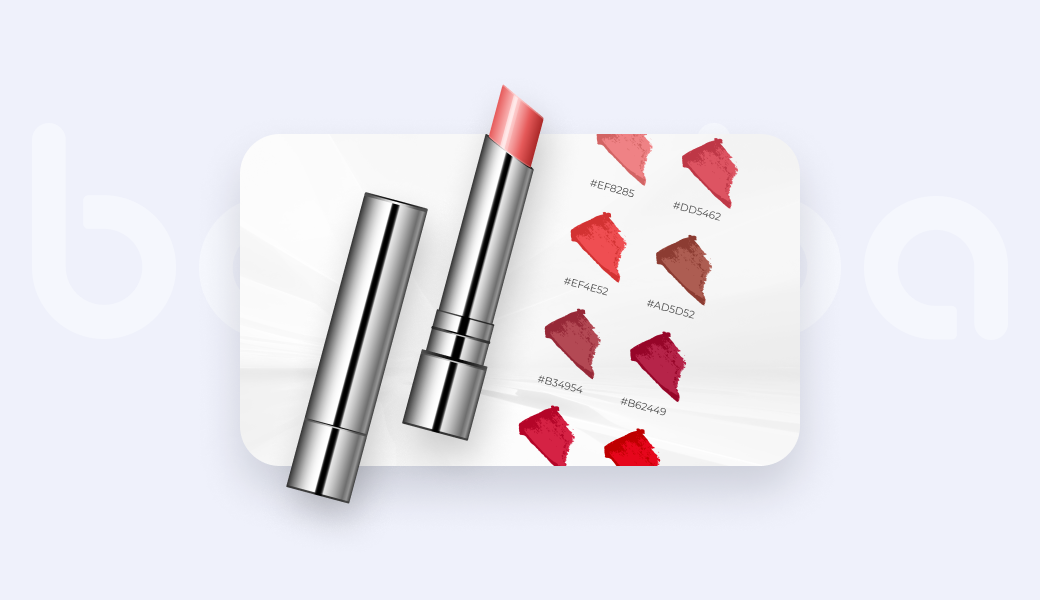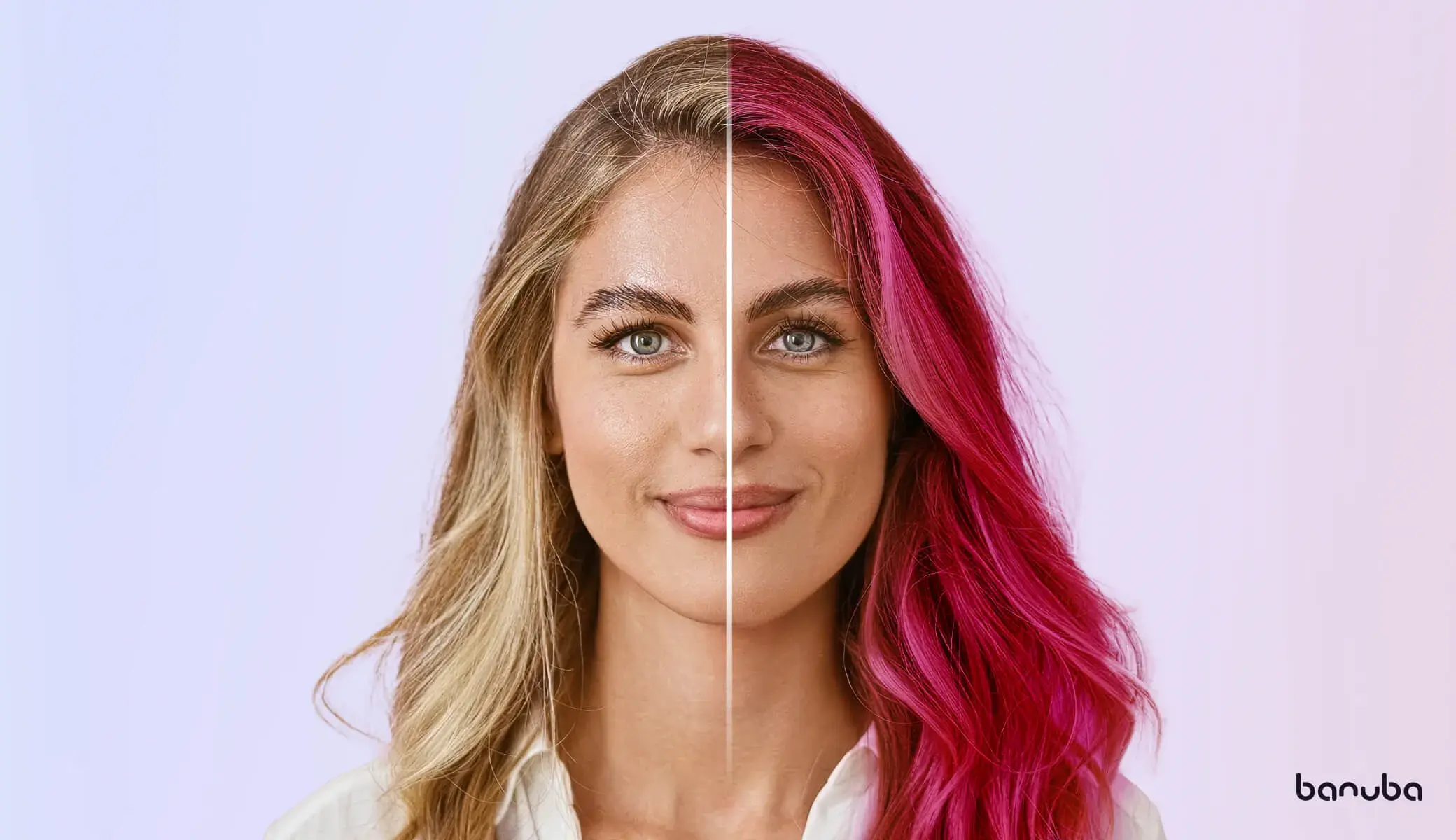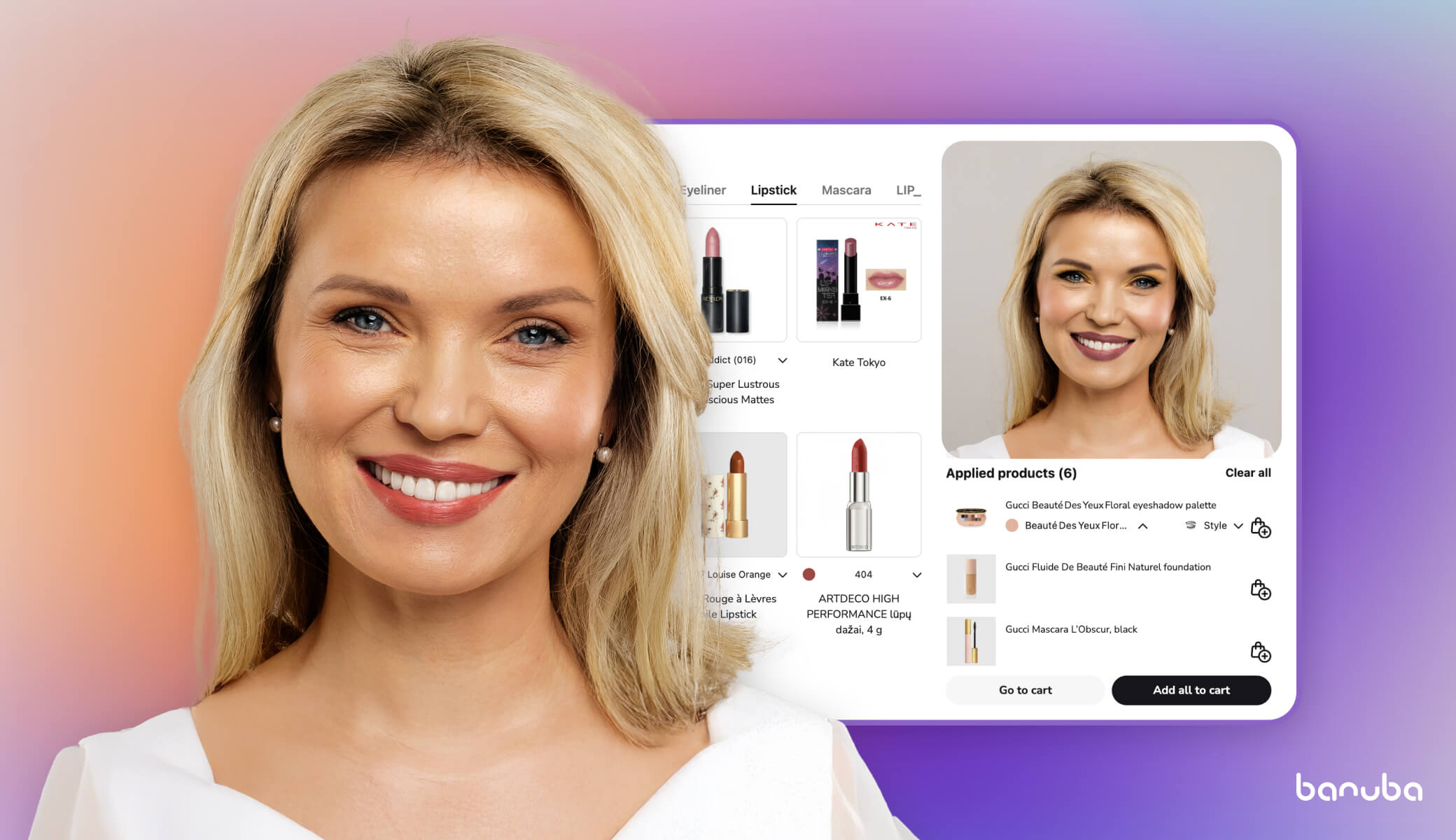How to Sell Cosmetics Online?
According to McKinsey analysis, beauty products online sales will account for up to 25% of all retail sales. More consumers shop for their favorite beauty items from the comfort of their homes. However, selling online challenges retailers — from the inability to try products before purchasing to the difficulty of standing out in a crowded market. Let's explore how beauty businesses can overcome these obstacles and succeed in online sales.

Top 13 Challenges of Selling Makeup Online
If you want to sell makeup, you have to be aware of the challenges ahead. Let's review the typical pitfalls for an online cosmetics store.
High Competition
High competition is a major challenge for selling makeup online. According to a report by Statista, e-commerce sales of beauty products in the US are expected to reach nearly $31 billion in 2026. This massive market potential has led to a flood of new online beauty retailers and brands, making it increasingly difficult for individual brands to stand out. A survey found that 93% of online shoppers frequently switched between websites to compare prices and products.
Moreover, social media has created a new crop of influencers promoting beauty products online. This makes an even more crowded market, with consumers bombarded with sponsored posts and brand advertisements.
To succeed in this highly competitive landscape, online makeup retailers must focus on creating a unique brand identity and offering products that stand out from the competition. This can be achieved through targeted marketing and advertising campaigns, strategic partnerships with influencers, and innovative solutions to enhance the customer journey.
Identifying the Beauty Industry Niche
To succeed in selling makeup online, retailers must identify a specific niche or target audience and tailor their products and marketing efforts accordingly. For example, some consumers may be interested in clean beauty products, while others may prefer vegan or cruelty-free options. A universal marketing strategy won't fit and lead to wasted ad budgets.
Identifying a niche can also help online beauty retailers to stand out in a crowded market. By focusing on a specific beauty area, retailers can differentiate themselves from larger brands and appeal to a particular group of consumers who may be more loyal and engaged.
Lack of Customer Loyalty
Unfortunately, the cosmetics market can't boast the most faithful audience, with the loyalty rate reaching 42%. It's challenging to sell makeup online, where over 65% of customers shop at a minimum of four stores. This lack of loyalty can be attributed to several factors, including a desire to try new products and trends, dissatisfaction with previous purchases, the abundance of online options, and various shopping channels.
Besides, shoppers became highly sophisticated and demanding, especially Generation Z, who grew up indulging in advanced technologies. Retaining customers turned into a race with loyalty programs, special offers, and discounts.
Building a loyal following can also be achieved through creating engaging and informative content, such as tutorials, product reviews, and user-generated content. By building a community around their brand and products, online beauty retailers can create a sense of loyalty and connection with their customers and increase their revenue, as 56% of buyers said they would rather purchase from an online store offering a loyalty program.
Poor Customer Journey
If you want to sell cosmetics online, you have to make the customer journey a walk to remember. The experience a client has when shopping for makeup with an online business can significantly influence their decision to purchase or return to the website.
Online beauty retailers must provide a diverse, easy-to-use, and fascinating customer journey to attract and retain customers. This can be achieved through various strategies, such as personalized product recommendations, virtual try-on, and detailed descriptions and reviews.
Virtual try-on, in particular, has become an increasingly popular solution for improving the customer journey in the online beauty sphere. According to a report by Statista, by 2025, one-third of customers will use augmented reality online and in-store. By offering virtual try-on tools, online beauty retailers can help customers visualize how a product will look on their face or skin tone, which can significantly improve their purchasing decision and overall satisfaction with the product.
In addition, virtual try-on tools can also increase customer engagement and interaction with the brand. For example, TINT from Banuba, which allows customers to try on makeup virtually, can boost the conversion rate by 300% and the average order value by 30%.
Low Average Order Value
A low AOV can have several consequences for an online beauty store's revenue and long-term success. One of the most significant consequences is that it can make it difficult for the store to achieve profitability. With a low AOV, the store may not generate enough revenue to cover its operating costs and profit.
Moreover, a low AOV can also make it challenging to acquire new customers through paid advertising. Many online advertising platforms charge based on a cost-per-click (CPC) or cost-per-acquisition (CPA) model, which means that the store needs to generate a certain amount of revenue per customer to make advertising profitable. If the AOV is too low, the store may not be able to generate enough income to make advertising cost-effective.
Furthermore, a low AOV can indicate that customers are not engaging with the beauty brand. This can lead to declining customer loyalty and reducing the likelihood of repeat purchases.
Lack of Omnichannel Marketing
You can't sell cosmetics online through just one channel. Nowadays, potential consumers have an average of 6 touchpoints with a brand before a sale. An online cosmetics business is more than a Facebook marketplace to sell makeup or other beauty products, miraculously waiting for more sales.
If you want to sell beauty products online, you have to reconsider your social media presence, leverage search engine optimization to attract more customers to a blog section on the website, introduce e-mail marketing, configure ads, and come up with multiple ways for good communication leading to selling. Altogether, it must be a seamless experience for a pleasant buyer's interaction with an online cosmetics business.
High Customer Acquisition Cost and Low Lifetime Value
The cosmetics business doesn't always require Voodoo magic to sell makeup online. However, the price to pay for a single new client with a low lifetime value is a challenge for big brands, leave alone newbies.
According to a study, the average LTV for a beauty customer is $188. However, this number can vary widely depending on customer loyalty and repeat purchases.
When CAC is high and LTV is low, it can significantly affect an online beauty store's revenue and long-term success. For example, a high CAC means that the store needs to spend more money to acquire each new customer, which can be particularly challenging when LTV is low.
To address these challenges, online beauty stores can implement strategies to improve customer retention and increase LTV. For example,
- a loyalty program;
- personalized recommendations;
- up-selling;
- cross-selling;
- cover shipping costs;
- enhance customer service;
- redesign product packaging, etc.
Research Online, Purchase Offline
Despite high impulse buying (73% of Slickdeals respondents confirmed that most of their purchases were spontaneous), 86% of consumers rely on reviews and research the product before purchasing it.
Before making a decision, people visit different websites, gather information, read reviews, watch cosmetic swatches and video overviews, and then drive to brick-and-mortar.
Online shopping for cosmetics is often associated with buying a pig in a poke. You can solve this problem by offering detailed product descriptions in your online store, the possibility of a virtual try-on, feedback from other buyers, a chatbot or online consultant, and the availability of video tutorials or instructions.
Hyper-personalization Trend
What seemed to be a perk and luxury in a customer's shopping experience turned into a necessity. According to surveys, about 76% of buyers get disappointed not being offered a personalized product recommendation or communication, with 72% expecting brands to have one.
For 88% of consumers, the experience beauty brands and online stores provide is equally important as the product they purchase. Besides, potential buyers expect online marketplaces and brands to anticipate their makeup and beauty products' desires and needs.
Cosmetics businesses not implementing personalization interactions with their potential consumers risk getting 40% less revenue, worse conversion rates (tailored offers get 75% higher results), and increased cart abandonment rates. Universal beauty products for everyone and poorly-segmented audiences with blurred customer profiles will put you on the bench and soon kick you out of the game.
Acquiring client data and adapting the customer journey is a win-win strategy to succeed. However, getting clients' data can become tricky due to Google's announcement to eliminate third-party cookies in 2024. Quizzes can help solve the issue. However, introducing AI-powered virtual try-on services like TINT from Banuba can help beauty businesses offer hyper-personalized interaction in an entertaining form with tailored recommendations.
Overuse of Influencer Marketing
Ordinary people are tired of influencers. Polished ad campaigns, photoshopped images, scripted videos — it's all distrustful. Only 8% of those surveyed confirmed that content created by an influencer had prompted their buying decision.
Is influencer marketing over? No, it's just transformed. Welcome to the era of user-generated content and microbloggers. About 43% of buyers confirm that user-generated content impressed and drove them to buy more than celebrities' or opinion leaders' posts.
The beauty brand Glossier is a prime example of this strategy's success. They promote their products precisely through publications created by their customers.
Poor Target Audience Analysis and Segmentation
Poor TA segmentation and analysis can significantly impact the success of online beauty businesses. If online beauty retailers fail to identify and understand their TA accurately, they risk wasting their marketing budget on ineffective campaigns and losing potential customers. Their marketing campaigns may not resonate with their potential customers. This can result in low engagement rates, low conversion rates, a high bounce rate, and a low return on investment (ROI), ultimately negatively affecting the business's profitability.
Retaining Customers
According to a study by Metrilo, the beauty sphere has an average customer retention rate of 23%. This low retention rate is partly due to the nature of the industry, where customers often try different products and brands to find what works best for them.
Customers who make a repeat purchase have a higher lifetime value than those who only make a single purchase, and it costs five times cheaper than selling to a new client.
The solution to retaining clients is not just in the magic of the store's own cosmetics but also in the level of service and the customer journey quality and engagement.
Returns and Refunds
Returns and refunds are a significant challenge for online beauty businesses. Customers expect to be able to return or exchange products easily and quickly, and failure to provide this can negatively impact the business's reputation and revenue.
According to a survey by Narvar, 96% of consumers stated that the returns process influences their likelihood of shopping with a retailer again. Furthermore, 68% of shoppers said they would not shop with a retailer again after a poor returns experience. This highlights the importance of an efficient and user-friendly returns and refunds policy for an online store.
Moreover, due to hygiene concerns, the beauty world has a unique challenge regarding returns and refunds. Many customers hesitate to purchase makeup online because they cannot try it on or see the product in person. That's when virtual try-on platforms like TINT come in handy, offering a safe and convenient of trying makeup before buying.
How to Sell Makeup Online and Not to Screw Up
So, can brands sell makeup online, overcoming all the challenges? Definitely, yes! However, a cosmetics business should think globally.
Start Selling Experience, Not Just Cosmetics
Weirdly enough, the cosmetics industry is not just about its products anymore. Consumers want an experience connecting them to the brand and enhancing their online shopping experience.
The trend for hyper-personalization dictates all the rules a cosmetics business has to follow to offer more than goods. Besides, taking a client behind the scenes and telling a story can also help successfully sell makeup.
Leverage Technologies
Beauty tech turned shopping online turned into a fun activity. Unfortunately, developing a tech solution from scratch wastes time and money for beauty brands. However, partnering up with a ready-to-use tech solution is a win-win approach.
With makeup virtual try-on platforms like TINT, companies can cut their expenses on free samples, returns, and refunds, boost engagement and conversion, and up-sell.
TINT offers the quickest digitalization on the market (48 hours) and a variety of features, including:
makeup virtual try-on;
face analyzer;
total look recommendations.
Besides, it will soon unroll the one-of-a-kind skin care effect, allowing testing the skincare cosmetics online and selling the results in both short- and long-term runs.
Keep Up with Beauty Industry Trends
Every self-respecting business owner should keep abreast of and follow emerging beauty trends and tendencies. If you want to sell cosmetics, you must offer what customers expect and reflect the trends on your product pages. It will help you stay ahead of competitors and tailor marketing to hot topics and products.
Besides, keeping up with beauty trends can increase sales and revenue. A cosmetics brand is more likely to attract customers and make sales by offering products in high demand and relevant to current trends.
Use Metrics to Track Your Online Business Success
As you may have noticed, the challenges are drenched in metrics. By tracking and analyzing data related to their marketing and sales efforts, a cosmetics business can gain valuable insights into their customers' behavior, preferences, and purchasing patterns. They can use this data to tailor their product offerings, promotional campaigns, and pricing strategies to meet their customers' needs and preferences.
Additionally, monitoring metrics can help online beauty stores understand the effectiveness of their marketing and advertising efforts. Online beauty stores can assess the performance of their campaigns and adjust their strategies accordingly to maximize their return on investment.
Indeed, the world of online beauty sales is full of pitfalls. However, with the correct approach, vision, and partners, challenges transform into adventures.





